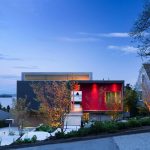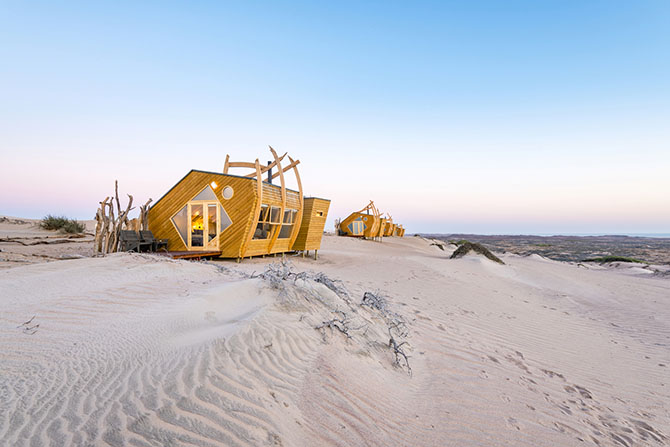
Nina Maritz Architects designed the Skeleton Coast Shipwreck Lodge located in Hoarusib River, Namibia, in 2018. Take a look at the complete story after the jump.
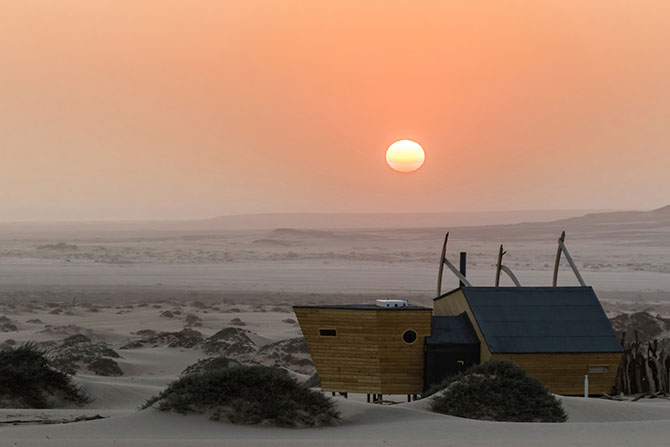
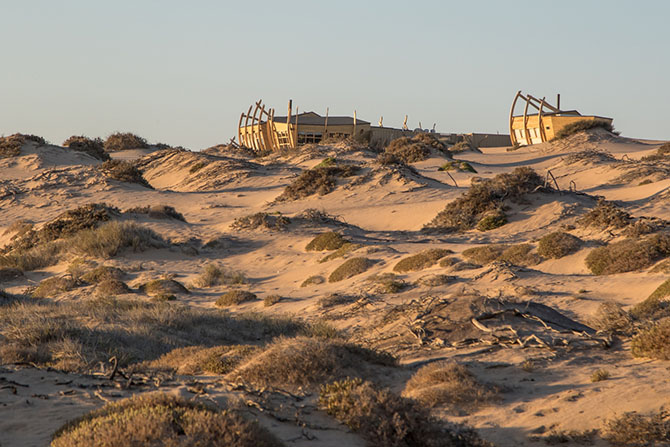
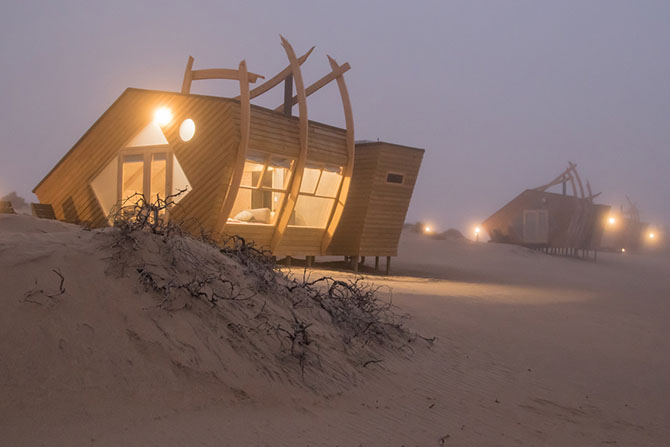
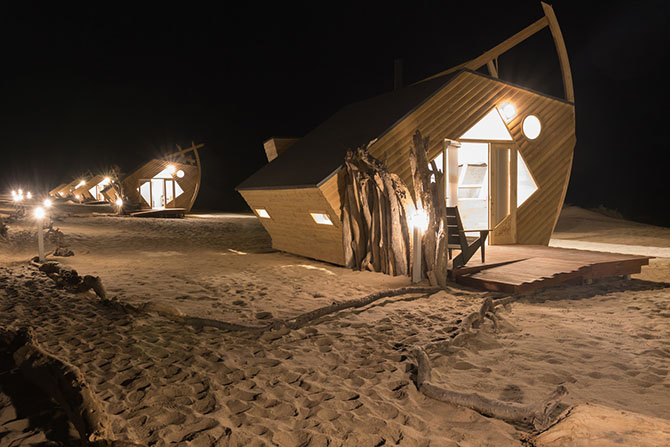
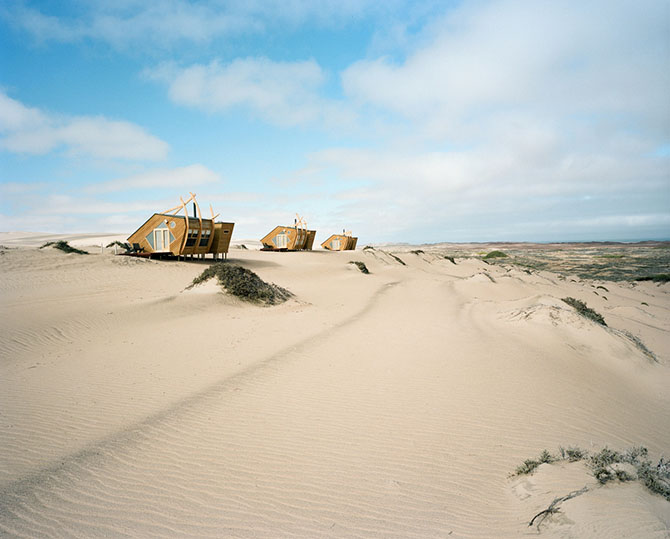
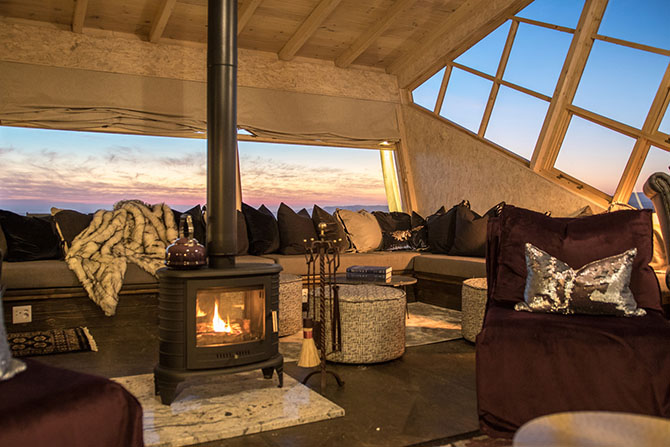
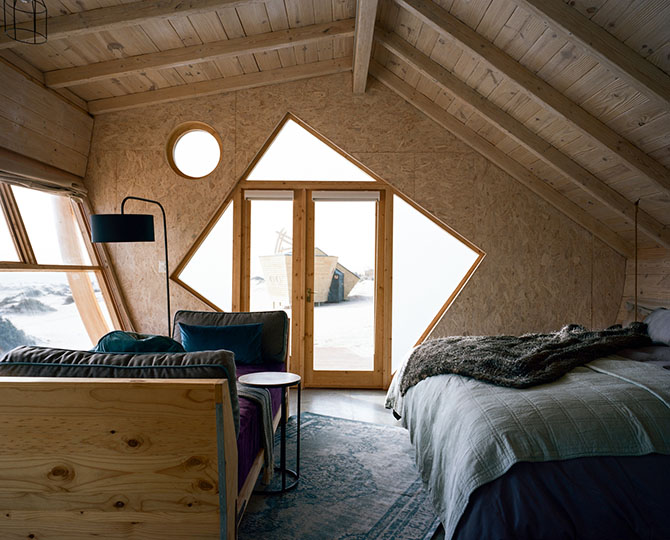
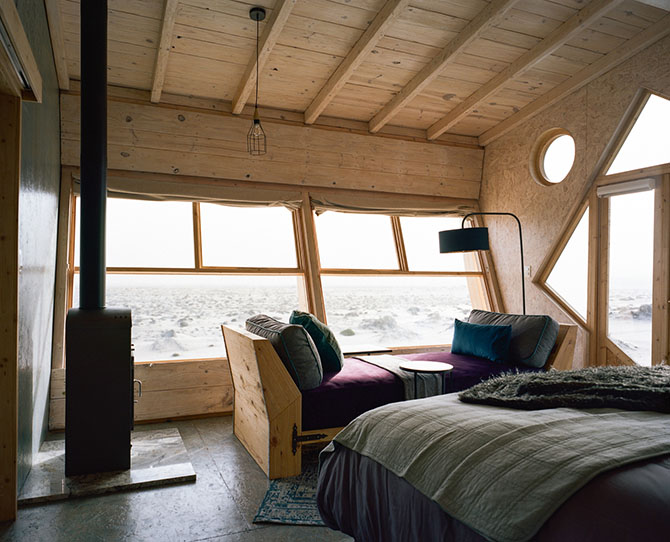
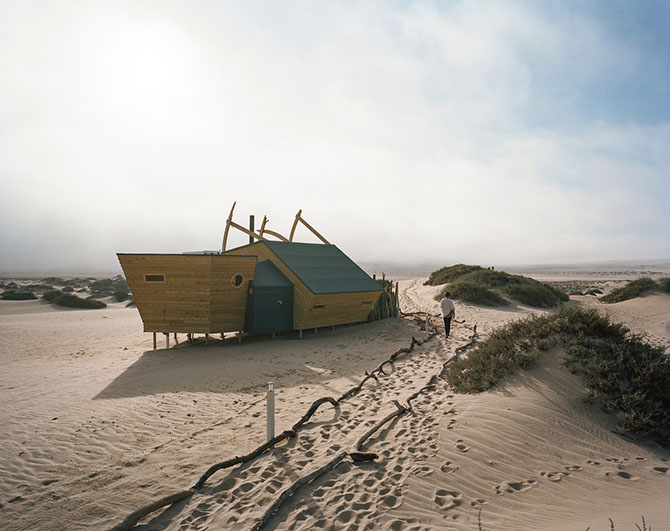
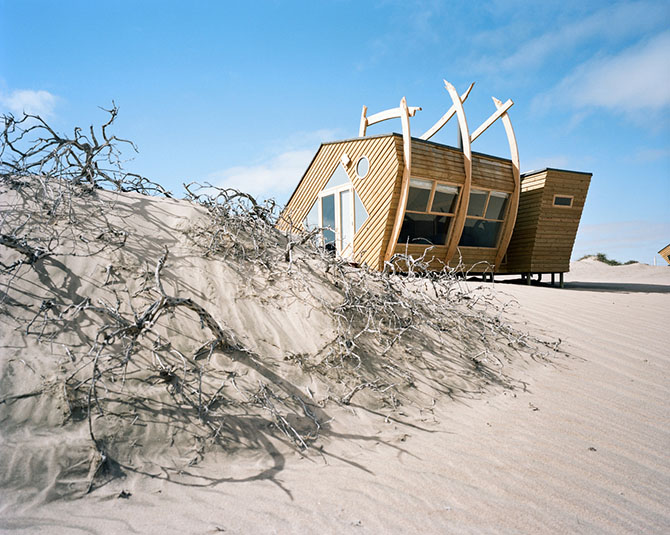
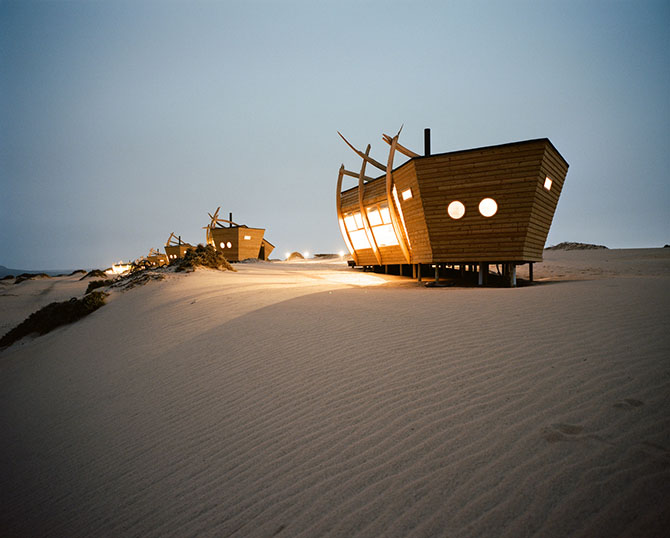
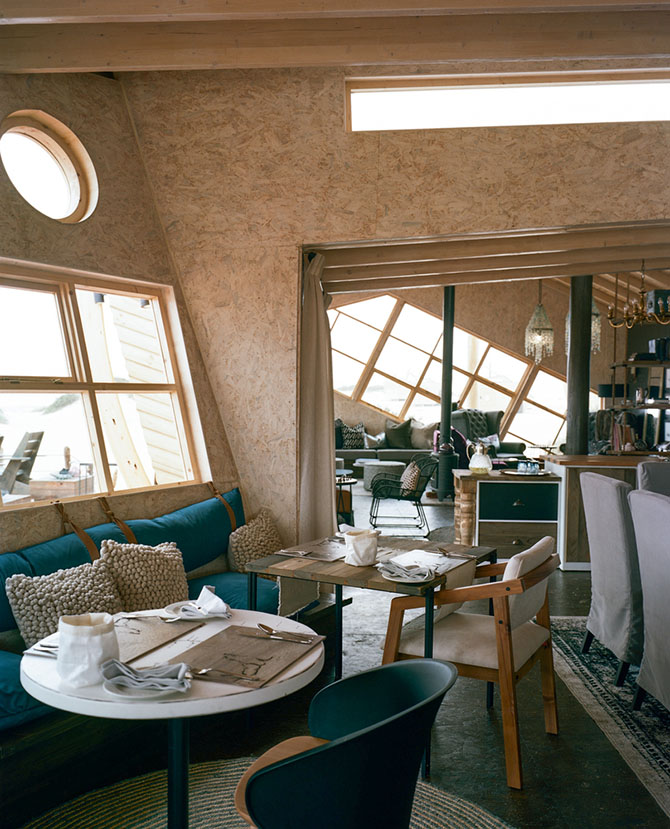
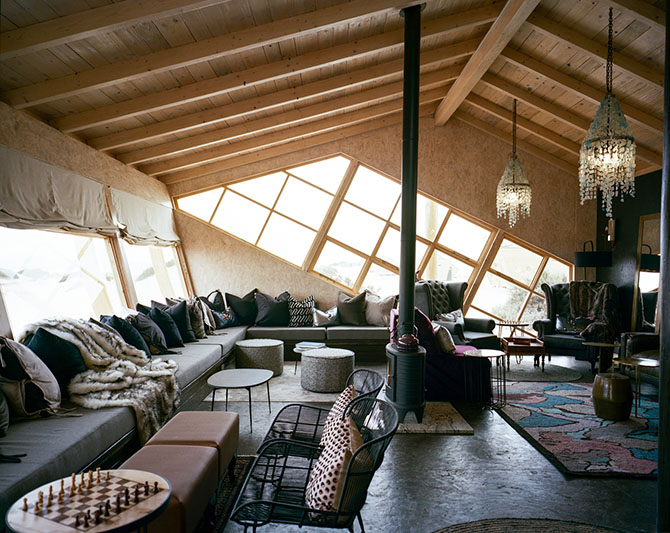
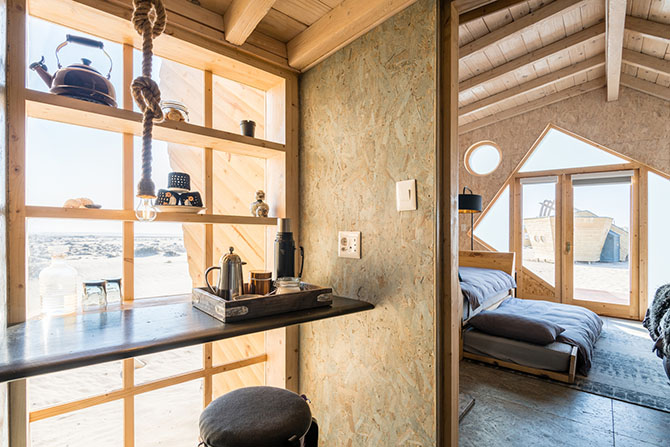
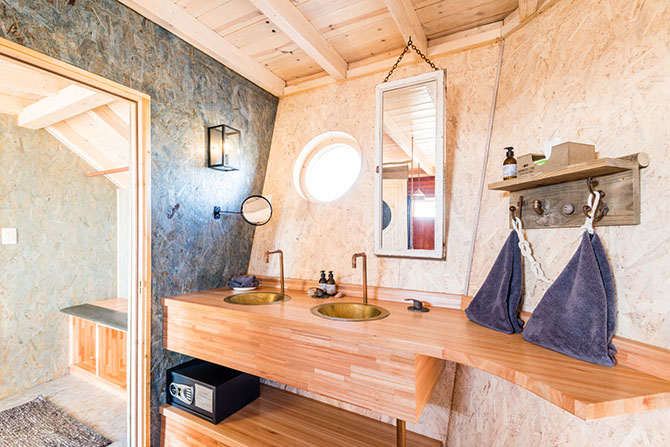
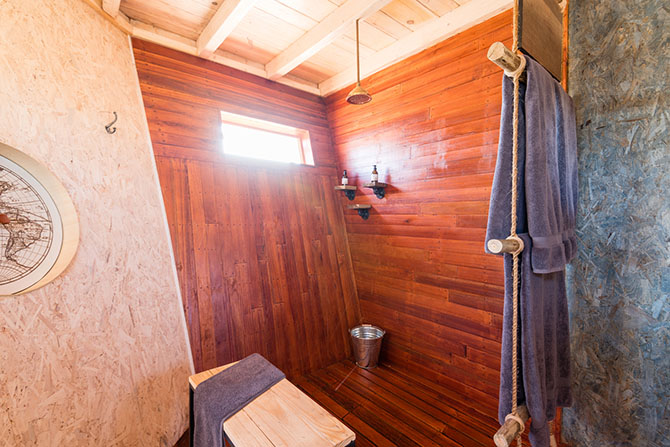
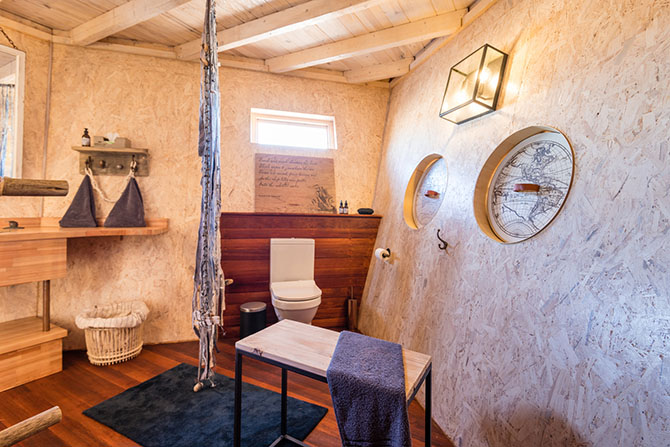
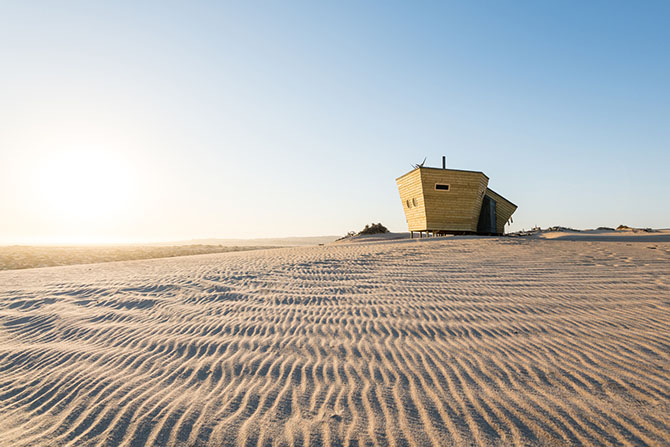
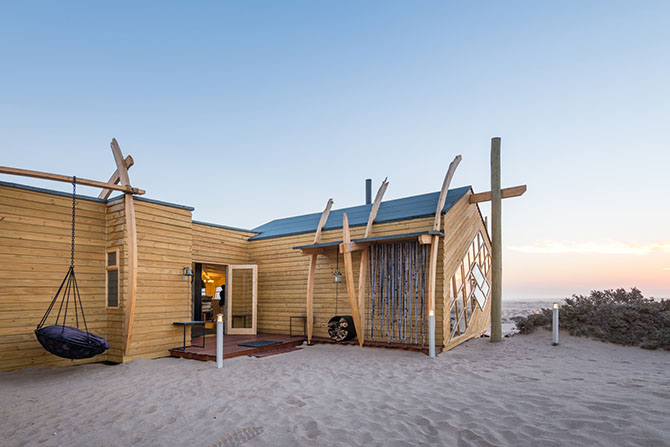
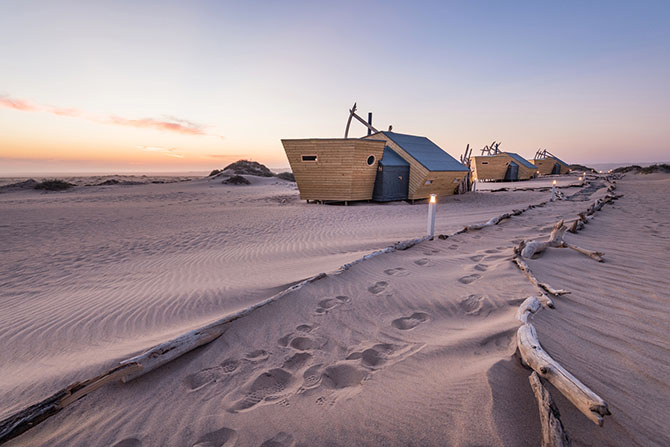
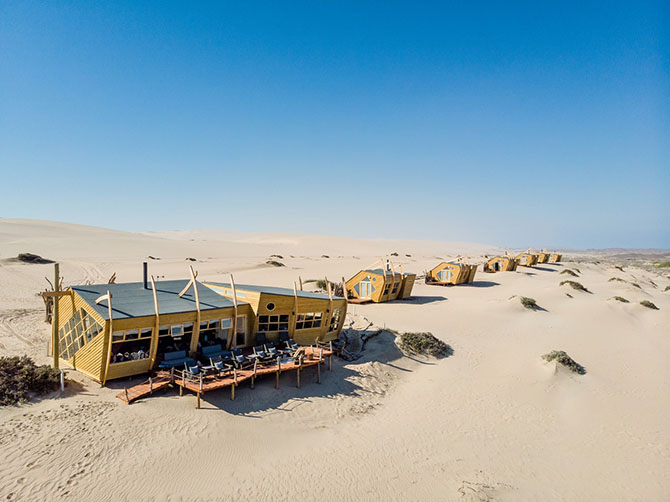
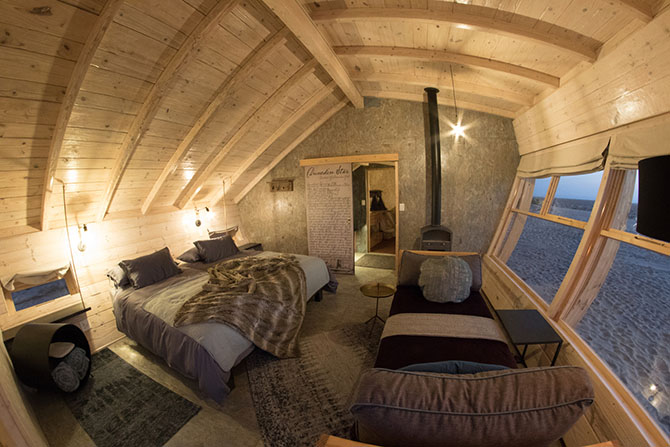
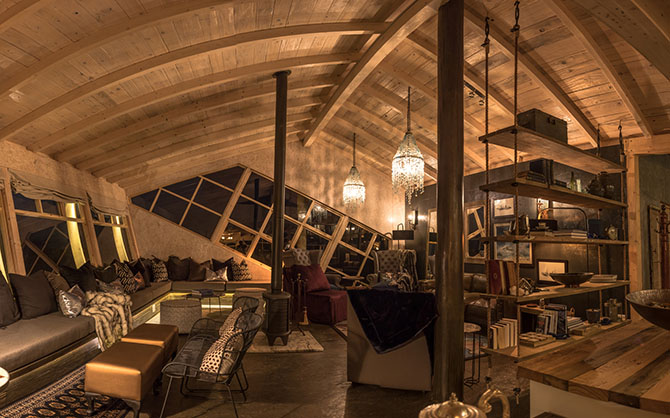
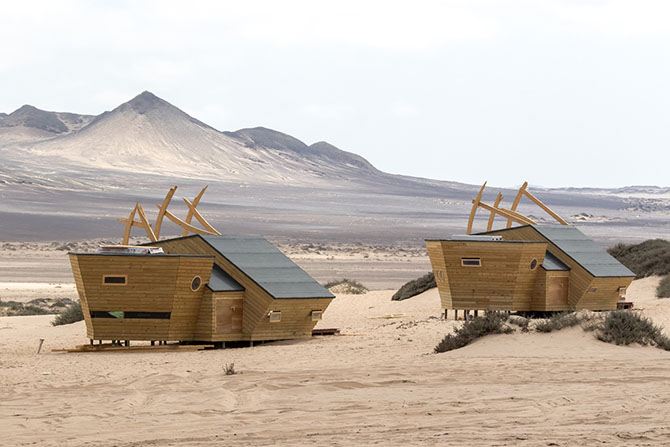
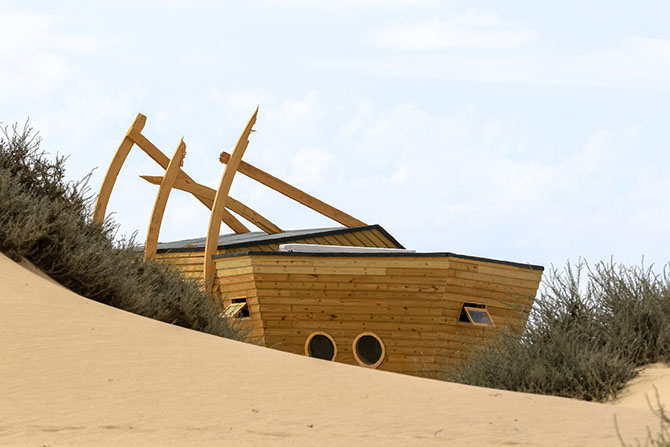
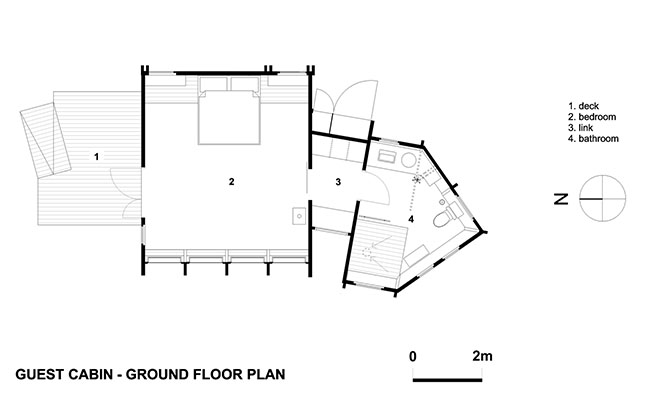
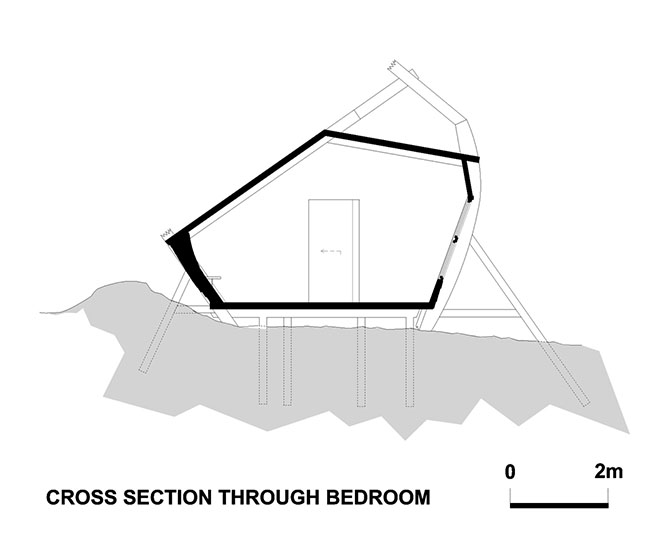
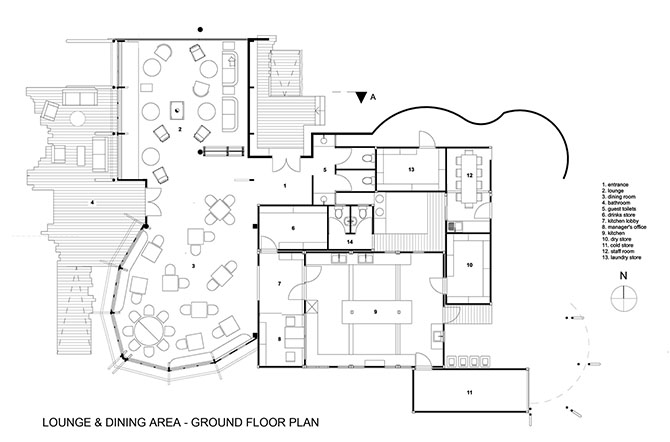
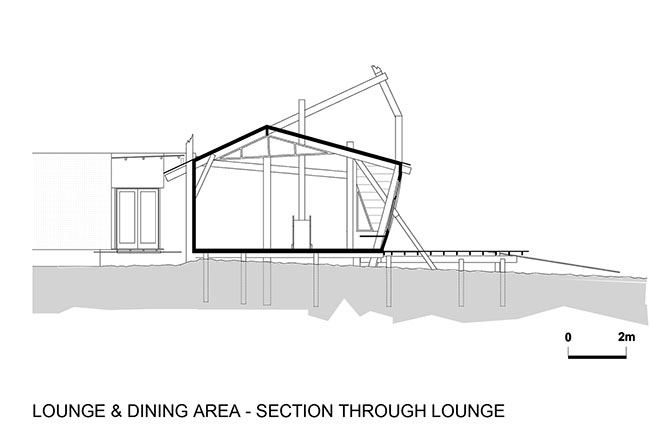
From the architects: Inspired by the deprivations endured by survivors from the foundered Dunedin Star and the desolate and harsh Skeleton Coast landscape, the architects tried to capture the contrast between shelter and exposure in their Shipwreck Lodge design (named after the architectural concept). Conceived of as abstracted wreckage fragments put together by survivors as shelter against the relentless wind and searing sun, the cabins are spread out along the dune edge like a listing flotilla against the skyline.
Sleeping spaces are separated from the bathrooms with a small link, to create privacy. The sharp bow of the bathroom diverts the prevailing south-west wind around the cabin to reduce the noise and battering the structure has to take. Large windows look out onto the distant sea view, with a minimum of external elements. Much of the furniture is built-in, similar to the interiors of sailing ships of old. The main lounge and dining area is a much larger version of the cabin, with built-in benches and seats recalling vessel bunks and bulkheads. Guests return from activities such as game drives to see desert-adapted wildlife to a warm and solid haven.
The design is a fine balance between being evocative, but not too derivative, with here and there around porthole window and a broken spar sticking out for some fun. To meet the challenging brief of a 20-bed luxury lodge with almost zero environmental impact, structures were pre-manufactured in panels off-site and went through 3 changes of transport to be assembled on site. This minimized the number of construction workers and the amount of waste on site. Solar power, solar water heating, gas cooking and bio-digesters for sewer are only some of the green strategies applied to minimize impact.
For the guest facilities, timber was selected as the most durable material in these harsh coastal conditions, as well as the most easily removable at the end of the 25 year concession period, and is plantation grown. The double-skin envelope is insulated with a recycled water-bottle fiber blanket and the exterior cladding is fixed with a revolutionary new timber nailing system to minimize the use of metal screws (which would rust easily and create problematic waste). Interior cladding varies from oriented strand board (OSB) and pine planking to saligna planks in wet areas.
For the back-of-house and staff facilities, shipping containers from the harbor of Walvis Bay were adapted off-site and installed on pre-cast concrete piles in courtyard formations to create wind-sheltered areas. Unlike inland lodges, all activities have to take place indoors, as the wind is too harsh to be outside for very long. Despite the architects’ longstanding experience on several tourism-related projects such as lodges, the Shipwreck Lodge was particularly challenging due to its remoteness, the harsh environmental conditions and the use of full timber structures, which is not at all common in Namibia. It needed the skills of a great team to pull off the entire project successfully.
Photography by Shawn van Eeden, Denzel Bezuidenhoudt, Michael Turek
Find more projects by Nina Maritz Architects: www.ninamaritzarchitects.com


